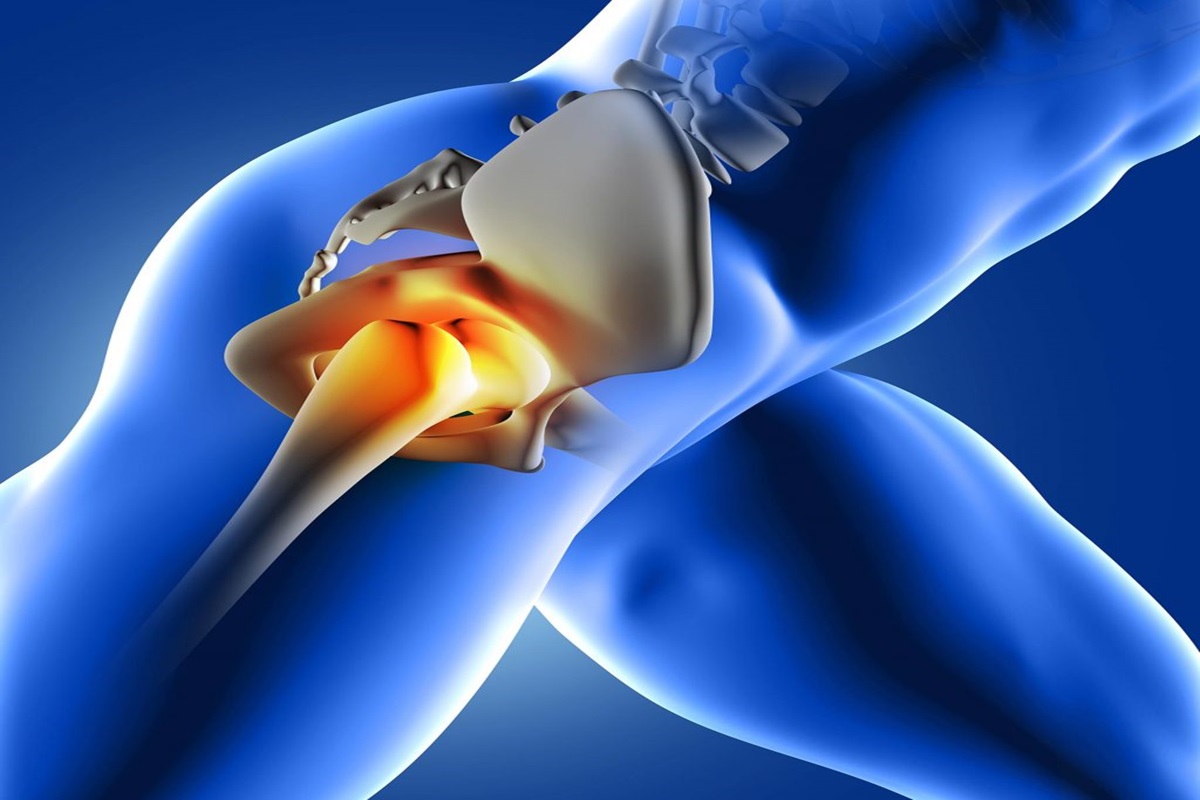Tired of tossing and turning because of nagging discomfort in your hips and legs? If you’ve ever asked yourself what causes hip pain that radiates down the leg at night, you’re certainly not alone. This type of pain, often sharp or aching, can extend from the hip down the thigh and sometimes even to the …
What Causes Hip Pain That Radiates Down the Leg at Night?

Tired of tossing and turning because of nagging discomfort in your hips and legs? If you’ve ever asked yourself what causes hip pain that radiates down the leg at night, you’re certainly not alone. This type of pain, often sharp or aching, can extend from the hip down the thigh and sometimes even to the foot. It commonly disrupts sleep, causes insomnia, and leads to disturbed sleep patterns that affect daily life. Whether you’re dealing with inflammation, nerve impingement, or joint dysfunction, nighttime hip pain isn’t just uncomfortable—it’s a red flag that something deeper may be going on.
Knowing what’s behind hip pain that radiates down the leg, especially during rest, can be a crucial step toward long-term relief. Below, we’ll explore medical causes, contributing factors, treatment options, and how expert care at Sustain Physical Therapy can help you recover strength, stability, and sleep.
Common Medical Causes of Radiating Hip Pain
Radiating hip pain is more than just soreness; it often involves nerve compression, joint deterioration, and soft tissue injury. This pain may extend into the thigh, knee, or even down to the foot. Pinpointing what causes hip pain that radiates down the leg requires examining the structures around the hip joint and how they interact during rest and movement.
Sciatica
Sciatica is one of the most common culprits behind hip pain radiating down leg to foot. It occurs when the sciatic nerve becomes compressed, often due to a herniated disc, spinal stenosis, or sciatic-piriformis syndrome. This compression leads to numbness and tingling, muscle weakness, or even loss of bladder or bowel control in severe cases. Pain may worsen with certain sleep positions, especially for side sleepers who compress the hip joint. Studies suggest that up to 40% of individuals may experience sciatica at some point in their lives, with approximately 5% of adults dealing with this condition at any given time. These numbers highlight just how common this condition is and why early diagnosis and targeted intervention are essential.
Hip Osteoarthritis
Hip osteoarthritis is a degenerative joint condition that leads to swelling, tenderness, and reduced range of motion. As cartilage breaks down, bone spurs can form, creating mechanical friction that sends referred pain down the leg. Nighttime pain becomes pronounced due to reduced joint lubrication during inactivity and the compression of pressure points while sleeping. Research shows that hip osteoarthritis is often linked to chronic hip pain, with radiographic findings indicating a prevalence of 20.7% in women and 27.3% in men. This emphasizes the importance of addressing joint health early, especially in aging populations.
Hip Bursitis
Hip bursitis, including iliopsoas bursitis, involves inflammation of the bursae—fluid-filled sacs that cushion the hip joint. This condition often results from repetitive movement, poor sleep position, or prolonged pressure on the joint. Lying on the affected side increases pain, making it a common cause of hip pain that radiates down leg at night. Treatments include ice packs, heat packs, massage, and physical therapy sessions that focus on core muscles, stretching, and low-impact activity. Wearing compression shorts may also offer support and reduce inflammation.
Labral Tear
A labral tear involves damage to the cartilage ring around the hip socket. It can cause sharp groin pain that may radiate into the thigh or buttock. Often linked to hip impingement or trauma, a torn labrum compromises joint stability and increases the likelihood of gluteal muscle compensation and muscle imbalance, both of which may send referred pain down the leg. Diagnosis usually involves an MRI scan, and treatment may include hip arthroscopy, targeted exercise, or in some cases, platelet-rich plasma injections.
Hip Impingement (FAI)
Also known as femoroacetabular impingement (FAI), this condition arises when the femoral head and acetabulum do not fit together properly, causing abnormal contact. Over time, this leads to joint damage, labral tear, and pain that can radiate along the IT band or into the thigh. Certain sleep positions can intensify this discomfort by locking the joint into an impinged posture. FAI is often treated with physical therapy, anti-inflammatory diet, hip alignment correction, and sometimes surgery if symptoms persist.
Greater Trochanteric Pain Syndrome
Greater trochanteric pain syndrome includes gluteal tendinopathy, hip bursitis, and iliotibial (IT) band syndrome. It typically affects the outer hip and is often caused by overuse injuries, poor biomechanics, or previous trauma. Pain can be triggered by lying on the side, walking long distances, or climbing stairs. Nighttime discomfort can be minimized using a mattress topper, a foam topper, or changing to a supportive mattress that cushions pressure points and reduces irritation in surrounding tissues.
Hip Tendonitis

Tendinitis of the hip, or tendinopathy, occurs when tendons become inflamed due to repetitive strain, poor hip alignment, or a muscle imbalance. Pain may worsen at night due to inactivity and lack of circulation. This condition frequently affects athletes or those performing strenuous exercise without adequate stretching or recovery. Management includes eccentric exercise, ice, and NSAIDs, combined with physical therapy that targets flexibility and strengthening of supporting muscle groups.
External Snapping Hip Syndrome
Also known as external snapping hip, this condition occurs when a tendon (often the IT band) snaps over the outside of the hip during motion. While it may seem harmless at first, repeated snapping can cause irritation and gluteal muscle strain, which leads to nighttime discomfort and hip pain that radiates down leg. Treatments include stretching, hip flexor exercises, and modifying activities to reduce tendon friction.
Additional Contributing Factors
Some systemic and situational factors can intensify nighttime hip pain. Identifying these can help guide more effective management strategies.
- Pregnancy: Hormonal changes and pelvic expansion can strain the iliotibial band, gluteal muscles, and hip joint, often resulting in pelvic pain in pregnancy and hip pain radiating down leg to foot. A pregnancy pillow can help improve sleep position and reduce pressure.
- Endometriosis: This condition can cause referred pain that mimics musculoskeletal issues, often affecting the hips, pelvis, and thighs.
- Muscle Strains: Overworked or strained core muscles, hip flexors, or glutes can lead to inflammation that worsens at night.
- Hip Fracture (Especially in Older Adults): Undiagnosed or subtle fractures can lead to hip pain that radiates down the leg and should be evaluated with imaging tests such as x-ray or CT scan.
Describing and Tracking Your Pain
Recognizing patterns in your pain is key to determining what’s causing it and how to treat it effectively.
- Nighttime vs. Daytime Pain Patterns: Pain that worsens at night could be linked to poor sleep position, inflammation, or lack of movement. Conversely, daytime pain might be due to overuse injuries or strenuous activity.
- Radiating Pain to Foot or Knee: Pain that extends past the knee or into the foot often suggests sciatica or nerve compression, while pain confined to the thigh may indicate joint-related conditions like osteoarthritis or labral tear.
Keeping a journal of pain frequency, swelling, and tenderness, especially after certain activities or positions, can be valuable for your physical examination or during physical therapy sessions.
Medical Treatments and Interventions
Living with hip pain that radiates down the leg—especially when it disrupts sleep—can be frustrating and exhausting. Fortunately, a range of medical treatments and therapies are available to help manage both the underlying causes and the painful symptoms. Relief often involves a multi-pronged approach combining conservative care with medical support.
- Physical Therapy- Sessions typically include manual therapy, targeted exercise, hip and buttock exercises, and eccentric exercise for tendon health. Sustain offers specialized hip pain physical therapy services that are designed to relieve symptoms and restore normal function through evidence-based interventions. Custom programs also address core muscle strength and range of motion.
- Pain Medication and Injections- Common options include: NSAIDs for inflammation, Corticosteroid injections for persistent bursitis or tendinopathy, Platelet-rich plasma injections to stimulate healing, and Hyaluronic acid injections for joint lubrication
- Surgery (When Necessary)- Surgical interventions such as hip arthroscopy, tenotomy, or hip replacement may be necessary for advanced labral tears, FAI, or osteoarthritis unresponsive to conservative care.
How Sustain Physical Therapy and Performance Can Help

At Sustain Physical Therapy and Performance, we specialize in helping individuals overcome complex pain conditions like hip pain that radiates down the leg at night. Our team takes a comprehensive, movement-based approach that addresses not just the symptoms but the root cause of discomfort—whether it’s sciatica, labral tears, hip impingement, or soft tissue issues like gluteal tendinopathy. Through personalized care plans, expert manual therapy, and corrective exercise programs, we empower our clients to restore mobility, eliminate pain, and improve sleep quality. If you’re looking for long-term relief and a path back to a more active, comfortable life, Sustain Physical Therapy and Performance is here to guide you every step of the way.
Personalized Treatment Plans
Each plan starts with a thorough physical examination, movement screening, and range of motion assessment. We consider your unique condition, lifestyle, and goals before crafting your recovery strategy. Our clinicians use advanced movement analysis to pinpoint biomechanical inefficiencies that may contribute to radiating hip pain. This ensures that each treatment plan is not only effective but also tailored to prevent future flare-ups.
Manual Therapy and Movement Correction
We apply hands-on techniques and adjust faulty movement patterns that contribute to muscle imbalance, gluteal tendinopathy, or tendinitis. This approach helps relieve pressure points, improve hip alignment, and reduce the risk of recurrence. Techniques may include joint mobilization, soft tissue release, and neuromuscular re-education to restore optimal function. Our goal is to create pain-free movement patterns that support long-term healing and comfort during both activity and rest.
Long-Term Pain Management
Emphasis is placed on building core and gluteal strength to provide better support for the hip joint. This includes hip stability exercises recommended by experts to enhance joint control, prevent re-injury, and promote long-term pain relief. We also guide patients through lifestyle adjustments, including anti-inflammatory strategies and recovery tools like ice, heat, and compression, to manage symptoms outside the clinic.
When to See a Doctor
You should consult a medical professional if you experience persistent hip pain that radiates down the leg, especially if it’s interfering with your sleep or daily activities. Warning signs that warrant immediate attention include muscle weakness, numbness and tingling, or more serious symptoms like loss of bladder or bowel control. Additionally, sudden or severe swelling, tenderness, or other signs of infection may indicate an underlying condition that requires urgent care. If your pain doesn’t improve with rest, ice, or physical therapy, it’s important to seek further evaluation. An early diagnosis using an MRI scan, x-ray, or CT scan can make a significant difference in identifying the root cause and guiding effective treatment.
Conclusion
Hip pain that radiates down the leg at night can severely disrupt your life—but it doesn’t have to. With the right blend of medical care, physical therapy, and lifestyle adjustments, you can sleep soundly again. Whether it’s a labral tear, sciatica, hip impingement, or bursitis, recognizing the warning signs and seeking professional guidance is the key to relief.
FAQs
How do I stop my legs and hips from hurting at night?
Use a supportive mattress or foam topper, sleep with a pillow between knees, and consider ice packs, hip and buttock exercises, or compression shorts to reduce inflammation and stabilize the joint.
How to tell if hip pain is muscular or bone?
Muscle pain usually feels like aching or tightness and improves with stretching, while bone-related pain tends to be sharp, deep, and constant—even during rest. Imaging tests like an x-ray or MRI scan can provide clarity.
How do you know if it’s hip pain or sciatica?
Hip pain often presents in the groin, outer hip, or buttock, while sciatica travels from the lower back down the leg to the foot. If your symptoms include numbness and tingling or pain worsens while lying down, sciatica may be the cause.
Dr. Adam Babcock PT, DPT
“We Help Active Adults Quickly Recover From Pain Or Injury So They Can Stay Active, Get Back To What They Love To Do, and Do It For Decades”






